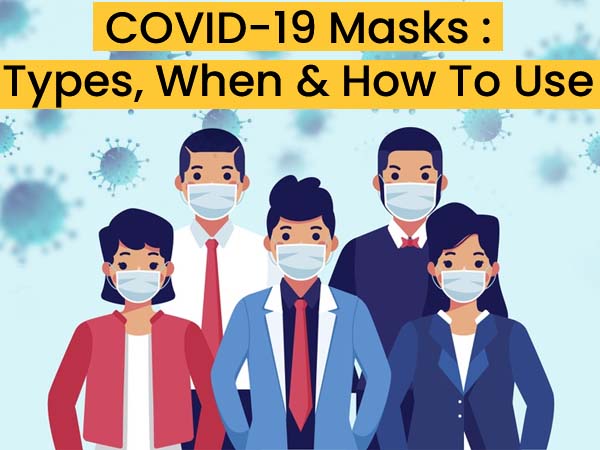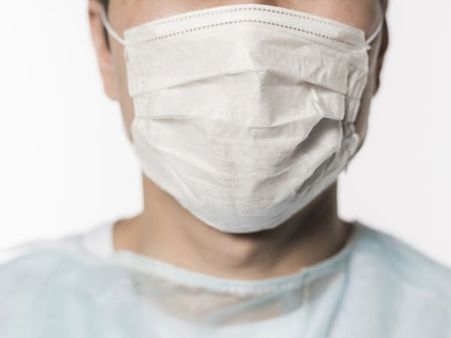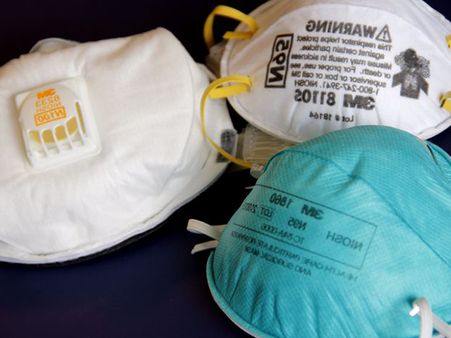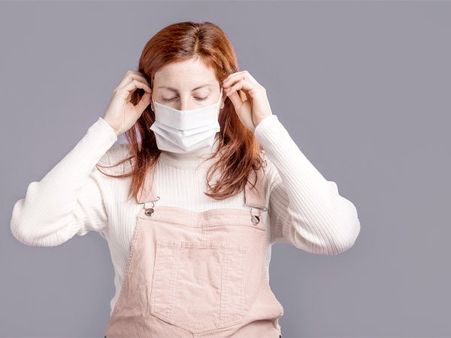Just In
- 1 hr ago

- 3 hrs ago

- 14 hrs ago

- 17 hrs ago

Don't Miss
- Sports
 PBKS vs MI IPL 2024: New PCA Stadium Pitch Report, Mullanpur Weather Forecast & Live Streaming Info
PBKS vs MI IPL 2024: New PCA Stadium Pitch Report, Mullanpur Weather Forecast & Live Streaming Info - Movies
 Bade Miyan Chote Miyan Box Office Day 8 Prediction: Akshay’s Film To Cross 50Cr Ahead Of LSD 2 Release
Bade Miyan Chote Miyan Box Office Day 8 Prediction: Akshay’s Film To Cross 50Cr Ahead Of LSD 2 Release - Finance
 Tata Steel, Adani Ent, Vedanta, NMDC, SAIL, Others: Near-Term Strategy For Investment In Metal Stocks
Tata Steel, Adani Ent, Vedanta, NMDC, SAIL, Others: Near-Term Strategy For Investment In Metal Stocks - News
 Delhi Capital's Captain Rishabh Pant Gathers Praise For His Wicketkeeping Skills, Stunning Catch
Delhi Capital's Captain Rishabh Pant Gathers Praise For His Wicketkeeping Skills, Stunning Catch - Education
 SCCL Recruitment 2024; Application process, Selection criteria and more
SCCL Recruitment 2024; Application process, Selection criteria and more - Automobiles
 Mahindra 3XO SUV Latest Teaser Reveals Connected Car Tech: All Details Here
Mahindra 3XO SUV Latest Teaser Reveals Connected Car Tech: All Details Here - Technology
 OnePlus 13 Early Leak Hints at a Revamped Camera Island, and Fast Charging to Remain at 100W
OnePlus 13 Early Leak Hints at a Revamped Camera Island, and Fast Charging to Remain at 100W - Travel
 From Coconut Breaking on Head to Men Dressing as Women: 12 Unique Indian Rituals Explored
From Coconut Breaking on Head to Men Dressing as Women: 12 Unique Indian Rituals Explored
Coronavirus Face Masks: Types, When And How To Use
The rate at which coronavirus (COVID-19) cases are sky-rocketing is very concerning; countries all over the world are trying to fight against the pandemic that has infected 723,328 and caused 34,005 deaths globally.
To tackle this critical situation, the health authorities have asked everyone to stay in self-quarantine and to wear a face mask while venturing out of your homes to minimise the risk of spreading the disease. So, people are scrambling to get their hands on face masks to protect themselves and others from coronavirus.

Face masks offer protection against respiratory infections for health care workers and the general public and reduce the transmission in the community.
Types Of Face Masks

1. Surgical face masks
They
are
slightly
loose-fitting,
disposable
masks
which
are
approved
by
the
Food
and
Drug
Administration
and
mostly
used
in
the
health-care
fraternity.
Doctors,
nurses
and
dentists
wear
them
while
treating
patients.
Surgical
masks
prevent
water
droplets
of
bodily
fluids
that
may
contain
virus
or
other
germs
from
escaping
through
the
mouth
and
nose,
especially
while
coughing
and
sneezing
[1].

2. Respirator masks
Respirators, also called N95 respirator masks are specially designed to protect the wearer from germs in the air, like viruses. It covers your face properly to prevent airborne viruses from entering through the nose or mouth and are much more effective at preventing the virus than regular face masks [2].
N95
masks
are
certified
by
the
Centers
for
Disease
Control
and
Prevention
(CDC)
and
National
Institute
for
Occupational
Safety
and
Health.
The
name
N95
comes
from
the
fact
that
they
can
filter
95
per
cent
of
airborne
particles,
as
per
the
CDC.
N95
masks
are
also
worn
when
a
person
is
painting
or
handling
toxic
materials.


What Do The Studies Say?
A study published in PLOS Pathogens shows that patients with flu, also called influenza, should wear face masks to lower the transmission to other patients and staff members. It limits the spreading of large droplet spray containing the virus [3].
Another 2016 study conducted in Japan among school children with seasonal influenza showed that wearing a mask provided 8.6 per cent protection [4].
A study published in the Influenza and other respiratory viruses found that N95 respirators provided protection against respiratory infections [5].


When To Use Face Masks?
As per the WHO recommendations, you should use a mask:
- If you are taking care of a person suspected or confirmed with COVID-19 infection.
- If you are coughing or sneezing.
- If you are a health-care worker attending to patients with respiratory illness.
- If you are going to visit the doctor.

How To Use Face Masks?
According to the Ministry of Health and Family Welfare, here are the ways to wear a face mask:
- Unfold the pleats of the mask and ensure that they are facing down.
- Place the mask over your nose, mouth and chin and make sure that there are no gaps on either side of the mask. It should fit firmly.
- Avoid touching the mask while using it.
- Do not leave the mask hanging from the neck.
- Change the mask after six hours or as soon as they become wet.
- While removing the mask, do not touch the outer surface of the mask as it can be contaminated.
- Dispose of the used masks in close bins.
- After removal of the mask, clean your hands with soap and water or use an alcohol-based hand sanitiser.
To
Conclude...
A
face
mask
may
offer
added
protection
from
contracting
the
virus.
But,
apart
from
that,
you
should
maintain
other
precautionary
measures
too.
-
 healthCOVID Surge In India: Do You Need A COVID-19 Booster Shot?
healthCOVID Surge In India: Do You Need A COVID-19 Booster Shot? -
 disorders cureCommon COVID Symptoms In Fully Vaccinated Individuals: What You Should Know
disorders cureCommon COVID Symptoms In Fully Vaccinated Individuals: What You Should Know -
 wellnessMild COVID Linked To Life-Threatening Blood Clots, Increased Risk Of Cardiovascular Disease; Study
wellnessMild COVID Linked To Life-Threatening Blood Clots, Increased Risk Of Cardiovascular Disease; Study -
 wellnessCOVID-19 Variants In India: New COVID Variant May Pose Threat To Elderly People
wellnessCOVID-19 Variants In India: New COVID Variant May Pose Threat To Elderly People -
 basicsCovid-19 Linked To Early Onset Of Periods: What You Need To Know
basicsCovid-19 Linked To Early Onset Of Periods: What You Need To Know -
 wellnessCOVID XBB Variants Of Omicron In India: What You Should Know
wellnessCOVID XBB Variants Of Omicron In India: What You Should Know -
 disorders cureNew Omicron Subvariant BQ.1 Detected In Maharashtra: What You Should Know
disorders cureNew Omicron Subvariant BQ.1 Detected In Maharashtra: What You Should Know -
 disorders cureOmicron BF.7 In India, Risk Of Fresh Wave During Diwali: What You Should Know
disorders cureOmicron BF.7 In India, Risk Of Fresh Wave During Diwali: What You Should Know -
 wellnessCoronavirus Residues Might Be Causing Long COVID: New Study
wellnessCoronavirus Residues Might Be Causing Long COVID: New Study -
 wellnessCentury-Old TB Vaccine Could Be Effective Against Covid-19 And Other Infections: New Study
wellnessCentury-Old TB Vaccine Could Be Effective Against Covid-19 And Other Infections: New Study -
 disorders cureCovid-19 Patients At Risk Of Neurological & Psychiatric Conditions Two Years After The Infection: New Study
disorders cureCovid-19 Patients At Risk Of Neurological & Psychiatric Conditions Two Years After The Infection: New Study -
 wellnessCOVID In Smokers: An Expert Explains
wellnessCOVID In Smokers: An Expert Explains


 Click it and Unblock the Notifications
Click it and Unblock the Notifications



